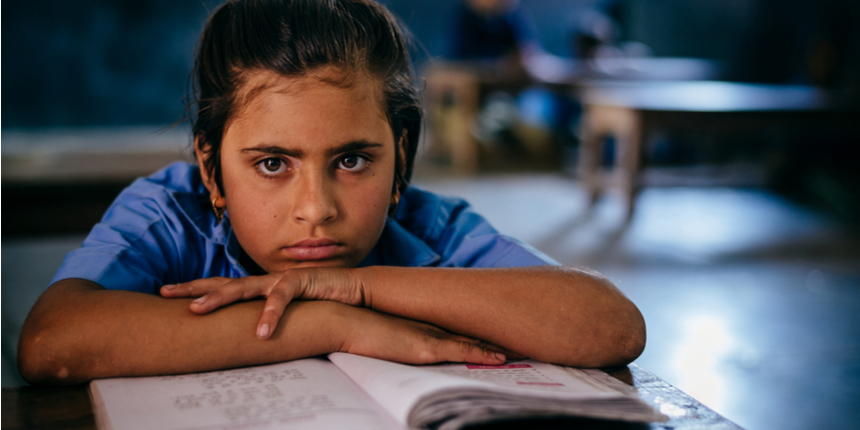Centre spent 79% funds for Beti Bachao Beti Padhao on advertising: Parliamentary Panel
R. Radhika | December 10, 2021 | 01:17 PM IST | 3 mins read
The scheme launched by the Narendra Modi government is for girls’ education. Girls have been especially impacted by the COVID-19 pandemic
CBSE 12 Class Free Mock Test
Boost your exam preparation with our CBSE 12 Class Free Mock Test, designed as per the latest exam pattern.
Attempt Now
NEW DELHI: The union government has spent 79 percent of the budget allocated for its flagship programme Beti Bachao–Beti Padhao (BBBP) on advertising, a Parliamentary committee report noted.
New: CBSE 2026 Final Date Sheet PDF Released - Download Here
Latest: Free All-India JEE Main 2026 Mock Test - Attempt Now
CBSE Class 12: Free Mock Test | Formula Sheet: Maths | Physics | Chemistry
CBSE Class 12 (All Subjects): PYQ's | Question Bank | Practice Questions | Sample Papers
The report tabled in Parliament on Thursday highlighted that out of a total of Rs 446.72 crore released during the period 2016- 2019, a whopping 78.91% was spent only on media advocacy instead of welfare interventions on education and health of girl child.
“Though the Committee understand[s] the necessity to undertake media campaign to spread the message of Beti Bachao Beti Padhao among the people, they feel that it is equally important to balance the objectives of the scheme,” the panel said in its report. The panel is led by Maharashtra BJP Lok Sabha MP Heena Vijaykumar Gavit.
Owing to the COVID-19 crisis, experts and child rights activists have pointed out that girl students have been especially vulnerable to unequal access to education.
Also Read| Schools closed, children forced into child marriage, labour, begging
Budget and underspending
In the same period, the scheme has underperformed at the state level despite Comptroller and Auditor General pointing out “very less spending” in 2016-17. Between 2014-15 and 2019-20, the states have utilised only Rs 156.46 crore-- 25.13 percent of Rs 652 crore released by the central government. The underutilisation has caused ill performance of the scheme, the panel remarked.
This scheme under the ministry of women and child development receives 100 percent assistance from the centre was launched to address the decline in child sex ratio in India. “The total budgetary allocation under the BBBP scheme was Rs 848 crore, excluding the COVID stricken the financial year of 2020-21,” the report said. Poshan Abhiyan, another scheme run by the same ministry witnessed underutilisation till March 2021. The official data showed, out of Rs 5,31,279.08 lakh released as central funds, only Rs 2,98,555.92 lakh had been utilised. The scheme runs on a cost-sharing ratio of 60:40 with the larger share borne by the central government.
Emphasising the need to focus on education and health under BBBP rather than on advertisements, the panel has recommended a regular review of proper utilisation of funds at the state and central level.
Also Read| Union Budget 2022: NIT funds too little for expansion, research, ranking
“In order to achieve better oversight, Ministry should develop without further delay the online Management Information System (MIS) portal for monitoring and supervision at State, District, Block and Village level and to make available the data in the web portal for transparency and real-time monitoring,” the panel suggested.
COVID-19 and girl enrollment
The committee further observed that the COVID-19 crisis has disproportionately affected adolescent girls, especially among the socially and economically backward groups.
Responding to a specific question about the effect of the COVID pandemic and the resultant scenario on the progress made in terms of enrolment and retention of girls, the education ministry said: “The school closure in India has affected 320 million children enrolled from pre-primary to tertiary levels of education. It has been estimated that of these, about 158 million are female students. There is a growing concern that the pandemic will disproportionately affect adolescent girls. Post pandemic, this can lead to a higher risk of girls permanently dropping out of school and reversing the gains made in recent years.”
Also Read| Union Budget 2022: Post-matric scholarship for SC students under-funded for years
Noting the highest dropout rates are at the secondary and high school levels, the committee suggested “incentivizing participation” to help more girls continue their schooling. Provisions of targeted scholarships, conditional cash transfers, and bicycles for transport can significantly increase the retention of girls in schools, the panel said.
Follow us for the latest education news on colleges and universities, admission, courses, exams, research, education policies, study abroad and more..
To get in touch, write to us at news@careers360.com.